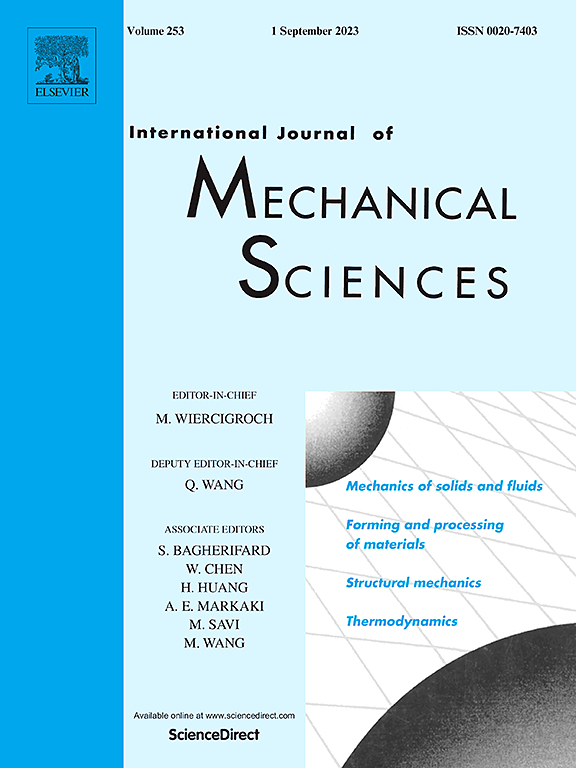Lorentz force and vibrations in transverse gradient coils in MRI
IF 7.1
1区 工程技术
Q1 ENGINEERING, MECHANICAL
International Journal of Mechanical Sciences
Pub Date : 2025-01-26
DOI:10.1016/j.ijmecsci.2025.110011
引用次数: 0
Abstract
Acoustic noise during Magnetic Resonance Imaging (MRI), with Sound Pressure Levels (SPL) exceeding 130 dB, is an ongoing issue for health and well-being of patients and operators and causes difficulties in signal acquisition. Understanding the characteristics and generation mechanisms of noise and vibrations is essential for the accurate development of noise control methods to be applied in the design of new devices and imaging sequences. The aim of this work is to present a closed-form analytical model for the spatial distribution of the Lorentz force per unit area that acts on simplified transverse gradient coil wire patterns. The geometrical configuration of the wire patterns has been explicitly modelled, in order to identify relationships between Lorentz forces and design parameters. To the best of our knowledge, this is the first time that a closed-form expression for the Lorentz force on transverse gradient coils has been presented on the basis of the spatial distribution of the wire patterns. Theoretical results for the Lorentz force distribution confirm that the amplitude of the Lorentz force on each elliptical spire constituting the transverse coil is linearly dependant on the static magnetic field strength B0 and the coil driving current I. A modulation along the length of each elliptic spire following a cosine law was identified. The difference of size between the elliptical conductors has been identified for the first time as a key parameter influencing the Lorentz force amplitude along different spires. Numerical simulations for the vibrational response of an insert gradient assembly excited by the proposed force field are carried out. The numerical results for the free and forced vibrations are in good agreement with numerical and experimental results in the open literature.

求助全文
约1分钟内获得全文
求助全文
来源期刊

International Journal of Mechanical Sciences
工程技术-工程:机械
CiteScore
12.80
自引率
17.80%
发文量
769
审稿时长
19 days
期刊介绍:
The International Journal of Mechanical Sciences (IJMS) serves as a global platform for the publication and dissemination of original research that contributes to a deeper scientific understanding of the fundamental disciplines within mechanical, civil, and material engineering.
The primary focus of IJMS is to showcase innovative and ground-breaking work that utilizes analytical and computational modeling techniques, such as Finite Element Method (FEM), Boundary Element Method (BEM), and mesh-free methods, among others. These modeling methods are applied to diverse fields including rigid-body mechanics (e.g., dynamics, vibration, stability), structural mechanics, metal forming, advanced materials (e.g., metals, composites, cellular, smart) behavior and applications, impact mechanics, strain localization, and other nonlinear effects (e.g., large deflections, plasticity, fracture).
Additionally, IJMS covers the realms of fluid mechanics (both external and internal flows), tribology, thermodynamics, and materials processing. These subjects collectively form the core of the journal's content.
In summary, IJMS provides a prestigious platform for researchers to present their original contributions, shedding light on analytical and computational modeling methods in various areas of mechanical engineering, as well as exploring the behavior and application of advanced materials, fluid mechanics, thermodynamics, and materials processing.
 求助内容:
求助内容: 应助结果提醒方式:
应助结果提醒方式:


